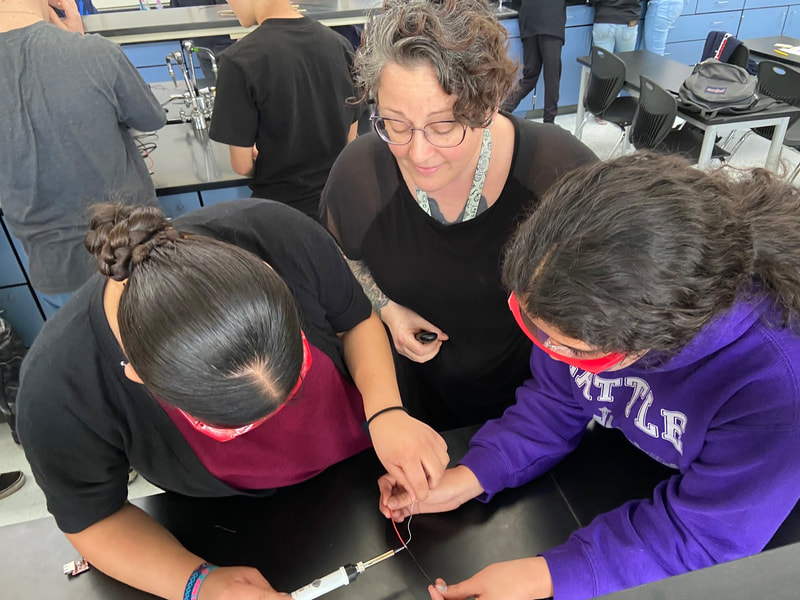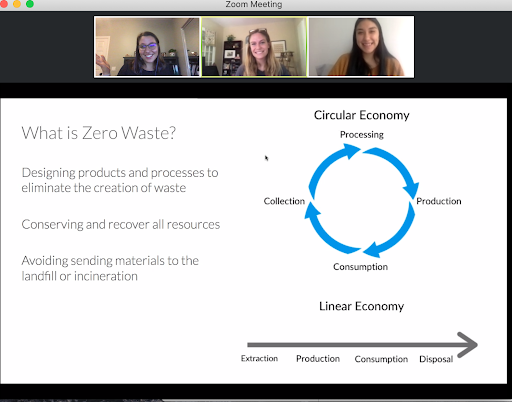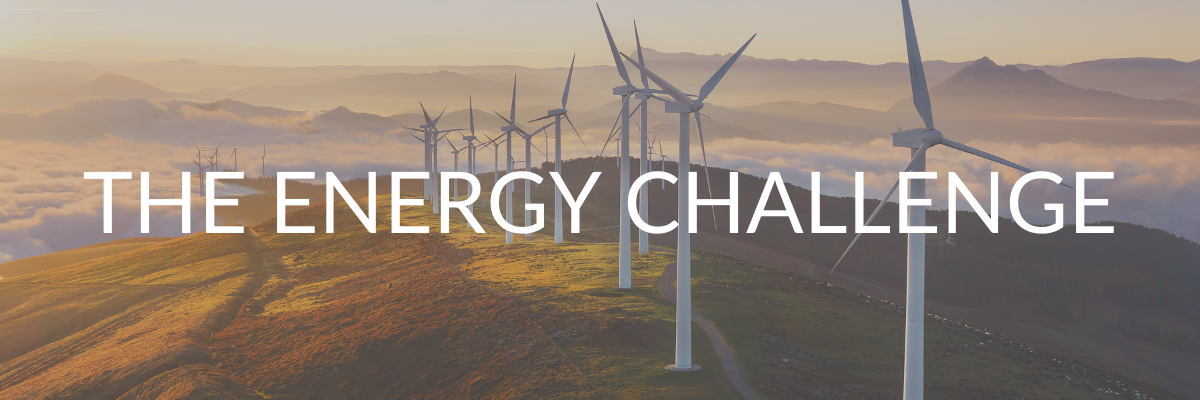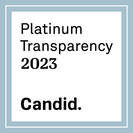|
By Yesenia Perez
A geographic information based system, ArcGIS collects, analyzes and interprets data to create a map that can explore real world environmental problems. It is a powerful and engaging tool that is used in a variety of career fields, but usually not taught to students until environmentally focused college courses. ArcGIS is a tool that can prompt exploration of the Earth’s geography and natural systems and fosters critical thinking. Bringing ArcGIS into high school classrooms revitalizes traditional environmental science lessons. Furthermore, it is a way to introduce a technical tool that is a highly advantageous skill set and important exposure for high school students preparing themselves for future career pathways. Last fall, the Energize School’s team reimagined the Watersheds and Public Water Systems curriculum to work for virtual learning with support from NOAA's Bay Watershed and Training program. This curriculum incorporates ArcGIS as a tool for students to map their local watershed. With each step of the mapping process students explore their watershed more deeply and create a visual representation of their understanding layer by layer, data piece by data piece. In this application, ArcGIS can be used to identify, analyze and mitigate human impacts on watersheds.
2 Comments
By Jessica Redden Career Technical Education (CTE) prepares high school students for their future careers by integrating academic knowledge and technical job skills. Introducing students to careers early sets them up for success in their professional futures! SEI’s Energize Schools program works with teachers and schools to offer Career Technical Education opportunities. Here are some ways that any school can bring CTE to their students: 1. Implement a lesson or unit aligned with CTE standards There are 15 CTE sectors that intersect with all education disciplines. No matter what you teach there are opportunities to bring career aligned activities into your classroom. Utilize the Energize Schools Curriculum Library to start planning your CTE, NGSS, and Common Core aligned lessons and units. 2. Adopt a CTE Pathway CTE pathways allow students to deeply explore career opportunities and develop relevant career skills, preparing them for the workforce. Before adopting a pathway, research your local labor market trends; it is best to adopt pathways relevant to your community job needs. One nationally growing field is the energy, environment, and utilities sector. In 2018, and 2019, clean energy jobs outnumbered fossil fuel jobs nearly 3 to 1 across the US and 5 to 1 in California respectively according to the E2 CA Clean Jobs Report. Utilize SEI’s energy, environment, and utilities sector courses Innovations in Green Technology and Energy and Environmental Design to jumpstart an energy and power technology pathway at your school! Students in Antioch High Schools IGT class solder solar USB chargers
By Giselle Serafin Instilling environmental principles in a class of students who all have different relationships with the environment is challenging. Madison Niesyn, Environmental Leadership teacher at Del Mar Middle School, was looking for ways to engage her students, some of whom were passionate about caring for the environment and others who had not yet made the connection between environmental protection and their own lives. Madison saw zero waste as an area of common ground, a place where she could start a pathway to advocacy for students at any level of familiarity with environmental stewardship. To bring education on waste to her students Madison reached out to Zero Waste Marin(ZWM).
To kick off this partnership, Zero Waste Schools Program (ZWSP) staff held an instructional planning meeting with Madison to discuss waste topics that interested her students, and how to best incorporate these themes in her virtual classroom. ZWSP staff and Madison decided to focus on what zero waste means, why the waste sorting rules are important, and where waste goes. Students were particularly interested in plastic pollution, a locally important issue in the San Francisco Bay. ZWSP staff developed a plan for two classroom presentations on zero waste with Madison’s 7th grade class. For the first presentation, the ZWSP team joined Madison and her class virtually on Zoom. Students asked insightful questions about zero waste careers, the role of zero waste in other environmental fields, and how to take action in their communities. After the presentation, one student reflected, “Something that I’ve learned from the ZWM presentations is that if one cares about a topic, they can find outlets to pursue their interest and make our world a better place simply by educating others!” By Hernan Gallo and Jessica Redden
Bring sustainability topics into any college classroom Climate change and sustainability topics are deeply interconnected with most disciplines. The challenges and opportunities of climate change can provide a connection between real world problems and classroom content, resulting in deeper student engagement and preparation for green jobs. The Energize Colleges team has worked with colleges and universities to support integration of sustainability curriculum. Interested in collaborating with Energize Colleges on how to bring climate change and sustainability content into your course or college campus? Reach out to us at [email protected] Host sustainability trainings for faculty members Involve faculty across disciplines, including science, engineering, arts, history and policy, to infuse environmental sustainability into their academic projects! You can start by hosting hands-on workshops with industry leaders. Energize Colleges hosts virtual "train the trainer" workshops on energy and sustainability and can support you in organizing a faculty training. Looking for inspiration? Request no-cost access to the Campus as a Living Lab Train the Trainer Webinar Recording and other trainings here. By Liz Fitzpatrick, Jessica Redden and Tyler Valdes Teaching during the COVID-19 pandemic has been a challenge for educators across the United States. In the Navajo Nation, limited access to electricity, running water, and the Internet has made distance learning an even more difficult task. At Whitehorse School in Montezuma Creek, Utah, 80% of students do not have access to the Internet at home.
“Not being able to interact with the students face to face has been hard...there are days where I only have four students or just one joining in because of the lack of Internet access,” reflected Brittany Redhouse, a Whitehorse teacher. To continue providing meaningful learning opportunities to their 288 students who span 6 grades during shelter-in-place, Whitehorse School teamed up with the PowerUp! Empowered Education Program. PowerUp! sent education kits and supplies with essential items like school materials, books, solar powered lanterns, hand sanitizer, and masks to 7,000 students, including those who attend Whitehorse. These kits also included a mini solar powered car that students could build and experiment with, and SEI’s contribution: learning materials focused on solar energy to go along with the car. By Emily Usaha San Diego High School, located in the heart of San Diego, was founded in 1882 and is one of the oldest public high schools in California. The school has a rich history, which includes the construction of a castle-like building called "The Old Gray Castle" in 1907 and the Balboa Stadium in 1914. The San Diego Chargers used the Balboa Stadium as their home field for six seasons. Over the course of its history, San Diego High School has grown in student numbers as the city expanded, and as a result new buildings were built and renovations made. Today, San Diego High School is divided into three small theme-based schools including the School of Business and Leadership, School of International Studies, and the School of Science and Technology serving over 2,500 students. Within the School of Science and Technology lives the GeoTech Academy, a small learning community serving students who are interested in focusing their studies on engineering and design rooted in sustainability and clean technologies. As Jackie Rivers, one of the six lead teachers of the academy, described it, “Geotech is a community and one big family. When any of our students are struggling they have a whole dedicated team they can go to”.
By Tyler Valdes and Jessica Redden As the world came to a halt and schools began to shut down in the wake of the COVID-19 pandemic, our team at SEI sheltered in our homes along with others including teachers, students, school staff, and their families. Many of us turned on lights and appliances, turned up the air conditioning or heating, plugged in our devices, and made meals with the stove and microwave. From telecommuting to online classes, we are home now more than ever and we are consuming more energy than ever! Remember that oven you hadn't touched for months? Were you one of many (including ourselves) that made banana bread in the first few months of shelter-in-place? Alongside baking, we have all taken on activities that use energy in some shape or form. As students consume energy during stay-at-home orders, it is critical that they are aware of the importance of energy conservation and energy efficient technologies. These energy saving habits will carry on when they return to school and eventually to their own homes or places of work.
By Lawrie Mankoff During this uniquely challenging school year, teachers are working hard to bring sustainability-focused activities and lessons to students learning from home. Energize Schools is working with educators to include a wide range of environmental topics in their virtual classrooms through engaging, hands-on projects. Over the summer, the Energize Schools team led four virtual teacher trainings on climate change, renewable energy, energy auditing and air quality. Here are five sustainability activities featured in the teacher trainings that you can use for remote learning: 1. Greenhouse effect simulation An online simulation is a great way to introduce students to the science behind climate change. We use simulations from the Concord Consortium in our curriculum to help students gain an understanding of the greenhouse effect. Students can observe visual representations of carbon dioxide and heat moving through our atmosphere, and the impacts humans have by releasing greenhouse gasses. 2. Easy energy auditing Energy auditing may seem like a difficult project to bring to students in their homes, but it can be as easy as instructing students to observe the appliances in their space. After making a list of energy users in their homes, students can check appliances for tags with power rating, use data in SEI curriculum on average energy usage, or research online to calculate their energy consumption and costs. 3. Explore renewable energy by building a water wheel A simple way for students to model a real world source of renewable energy is by creating their own water wheel out of whatever household materials they choose. Students can get creative using different materials to create their own water wheel, and learn how these models compare to real world hydropower. Marc Wheeler, a teacher from Woodside High School, made his water wheel using a CD and candle holders! 4. Learn about environmental justice through air quality maps
CalEnviroScreen is a powerful tool that allows students to see what areas of California are most burdened with pollution, alongside population characteristics including race and economic status. In exploring CalEnviroscreen air quality maps, students can see a stark overlap between the areas most polluted and where black and brown communities live today as a result of historical redlining and other discriminatory housing practices. 5. Have your students lead a energy conservation campaign Students can make a difference in protecting the environment by encouraging their communities to save energy. A virtual campaign makes use of social media or other online platforms to spread the word about the importance of reducing our energy usage. One way to have your students explore conservation is through the Energize Schools 2020 Energy Challenge! All of these activities and more are in the Energize Schools distance learning curriculum, which is free to all teachers. This curriculum can be requested through our distance learning page, and California teachers can also schedule a one-on-one session to plan their virtual sustainability lessons. |
Get In TouchDo you know an environmental leader who should be featured in a story? Reach out to [email protected]. Categories
All
Archives
April 2024
|
Get Involved
|
Contact Us
|
SEI Headquarters
100 Smith Ranch Road, Suite 124 San Rafael, CA 94903 Phone: (415) 507 - 2181 Email: [email protected] States where we work:
Arizona California Colorado Indiana Maryland New Mexico New York New Jersey North Carolina Oregon Washington Virginia |
ConnectSubscribe to the SEI quarterly newsletter to get involved and receive updates
|
SEI is a 501(c)3 nonprofit organization.









 RSS Feed
RSS Feed

